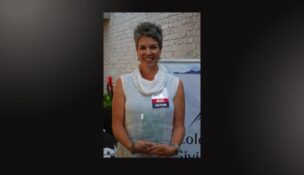South-central Colorado's hard-working vibe
Scrappy counties cultivate opportunity with niche crops, tourist draws
Suzie Romig //September 27, 2015//


South-central Colorado's hard-working vibe
Scrappy counties cultivate opportunity with niche crops, tourist draws
Suzie Romig //September 27, 2015//
Don’t call Colorado Springs southern Colorado; that just won’t fly with longtime residents of the San Luis Valley or folks who live in the scrappy counties that border New Mexico. The Springs is where south-central Colorado business owners often go for technical parts and repair services, but the region has a welcoming, hard-working atmosphere all its own.
The 10 counties – from Mineral to the west, Pueblo to the north and Las Animas to the east – evoke the heavy manufacturing history in Pueblo or potato farms around Monte Vista. The region is home to 232,800 residents, according to State Demography Office 2014 estimates. Economic development leaders and business owners say the area is holding its own in population and business development, pointing to trends such as growth of agricultural diversity with more niche and organic crops, continued attraction of international companies that support manufacturing jobs, and a push to nab more of the lucrative tourism pie from busier areas of Colorado.
Aside from pockets of retiree and second-homeowner growth in Custer County and communities such as Creede and South Fork, locals say south-central Colorado remains a solidly hard-working middle class to lower-middle class region.
“Everybody down here has to wear a lot of hats; that’s just kind of where we are and how we get things done,” says Randy Wright of the Alamosa County Economic Development Corp. “You have to be tougher and more creative to live in the San Luis Valley.”
Wright says the über growth and strong business climate in north-central Colorado requires south-central Colorado to work harder to attract businesses.
“We need a little extra push in the form of financial incentives for relocating companies,” Wright says.
ONE FAMILY’S PLAN
For decades, Jason Cody’s family grew 2,400 acres of barley for Coors Brewing Co.’s production, but when the boys went away to college and returned home, things had to change.
“We wanted to make opportunities for all the family members to be here and have sustainable wages,” says Cody, who left to attend theology school in Tennessee. “Trying to diversify your operation in order to hang onto your farm is a big trend. It’s the idea of traditional agriculture with value-added products.”
Now Cody and two younger brothers run the successful Colorado Malting Co. southwest of Alamosa that grows and dries barley to make malt for craft beers. The company has expanded from selling 40,000 pounds of malt in 2009 to 1 million pounds this year, shipped to such far-off destinations as Scotland and Japan.
Cody said local business advantages include a supportive and friendly community, small-town connections and a helpful Small Business Development Center. His family is working toward broadening the operation again, with plans to open a tasting room in the spring for visitors to try beers, whiskeys and bourbons made with barley.
South-central Colorado leaders would love to cultivate more specialty crops, especially those that provide year-round employment such as at Colorado Mushroom Farm outside of Alamosa. The farm reopened in October 2014, hiring or re-employing 120 workers with plans to add 130 more workers by the end of this year. The climate-controlled mushroom farm with 10 acres of buildings is on track to sell more than 6 million pounds of white, crimini and portabella mushrooms in 2015 to strategic markets in Denver and Albuquerque, farm manager Ravi Singh says.
Singh calls the business climate in the area warm and welcoming with the added bonus of lower land costs. Raw materials needed to grow mushrooms, such as wheat straw for compost, are available locally.
“Real estate prices are lower than the rest of Colorado, which definitely looks attractive for people seeking to live comfortably,” Singh says.
ATTRACTING TOURISM DOLLARS
South-central Colorado has its share of natural beauty, sunny days and cool nights, so locals are trying to attract visitors to more than just the Great Sand Dunes National Park. Business leaders want more people to know about local trails, attractions and activities, everything from the Rio Frio 5k race on ice on the Rio Grande River in January, to the annual Chile & Frijoles Festival each September in Pueblo.
Leaders with the San Luis Valley Great Outdoors Coalition, for example, have launched a new recreation and outreach website – www.SLVGo.com – with highlights ranging from bat watching at a former mine to bison ranch tours, from rock climbing in Penitente Canyon near La Garita to sightseeing in the Wheeler Geologic Area outside of Creede.
“The mission of SLV Go is to help diversify and try to attract visitors to our area,” says Karla Shriver, Rio Grande County commissioner and a third-generation potato farmer. “We have as many outdoor opportunities as the other areas of Colorado; we just haven’t taken advantage of advertising them outside of our area.”
MAINTAINING MANUFACTURING
No longer known primarily as a steel mill town, Pueblo still attracts heavy manufacturing companies of all sizes from diverse industries that make anything from cement to train rails, decorative rock and aircraft brakes. The latest industrial addition was the May 2014 opening of a division of pewag Traction Chain, an Austrian company that built a 30,000-square-foot plant. It has 28 local employees and is still hiring.
“The trend we are seeing is the foreign markets looking back to us for quality and distribution,” says Rod Slyhoff, president of the Greater Pueblo Chamber of Commerce.
Plant Manager Ron Francis says in addition to local steel resources and city incentives, pewag benefits from a collaborative regional effort to train employees. His workers complete 40 hours of training at Pueblo Community College in subjects from blueprints to the metric system.
REGIONAL CHALLENGES
South-central communities face challenges such as sufficient and affordable shipping and broadband connection in outlying areas.
Locally grown companies such as Crestone Telecom have stepped up to help solve regional concerns. Started by a former mayor of Crestone in spring 2012, the company now serves 639 clients with broadband via microwave towers.
Jason Cody at Colorado Malting says shipping options from areas farther from Interstate 25 are serviceable but slower and more expensive.
“Big freight companies want a big load or come through one time a week. We’ve been limited to using one company and had to do a lot of deliveries ourselves with a company trailer behind a pickup,” Cody says. One example of inconvenient shipping, Cody said, is a load sent to a brewing customer in Pagosa Springs – only two counties to the west – goes through Denver first.

























